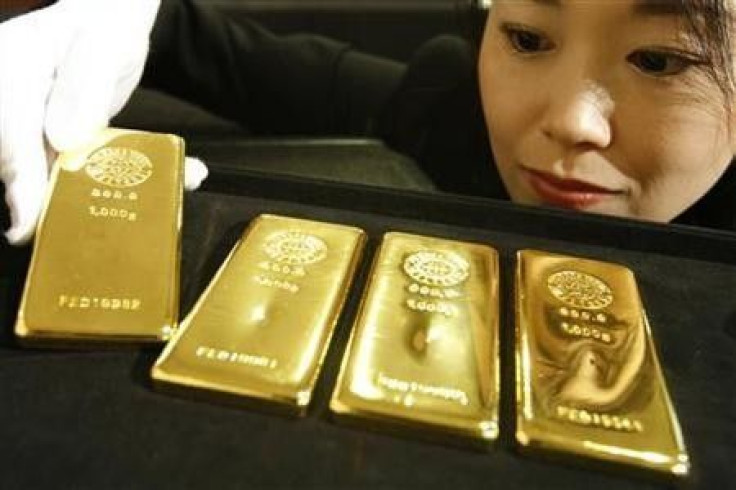Gold Prices Ease For Second Day

(REUTERS) -- Gold eased for a second consecutive day on Thursday, but was still set for its largest weekly gain in six weeks, thanks to the toll the re-emergence of the euro zone debt crisis has taken on investor risk appetite.
This week has seen Spanish bond yields leap to nearly 6 percent, a level perceived to be unsustainable for Madrid to service its debt, after the government unveiled more austerity measures and the head of the central bank warned the country's commercial banks would need more capital if the economy deteriorates further.
Equities have fallen to three-month lows, while holdings of gold in exchange-traded funds, often seen as a measure of longer-term investment appetite for bullion, held near record highs around 70.3 million ounces.
Spot gold was down 0.3 percent on the day at $1,652.94 an ounce by 1345 GMT, falling for a second day but set for a weekly gain of nearly 1.1 percent.
It's a market that is more or less being pinned in dollar terms to the $1,650 level for a while. The next move, I suspect, is going to be higher, but the market is fairly susceptible to headlines at the moment, Credit Suisse analyst Tom Kendall said.
Volumes are very thin, by and large, and the key really from here is for something to give gold a push up through $1,675/1,680 and above there, you would start to see some more activity, he said.
The euro and growth-linked currencies such as the Australian dollar strengthened on Thursday, earning some respite from concerns about the global economy but with gains hostage to the risk of a jump in borrowing costs at an Italian bond auction.
Italian three-year borrowing costs rose more than a full percentage point at the auction, boosted by new concerns about weaker euro zone states, and Italy undershot its maximum planned amount of 3 billion euros for the bond.
SAFE-HAVEN STATUS
The correlation between gold and the dollar has fallen to its most negative since the start of the year, around -65 percent, meaning gold is more likely to move inversely to the U.S. currency than it was a month ago, when this correlation was at -40 percent.
So the modest show of strength in the euro helped gold cut some losses, after fears about Spain's debt problem eased somewhat following ECB Executive Board member Benoit Coeure's comments on potential bond buying.
The comment has stabilised the stock market and euro, but the prospect in the euro zone still looks grim with yields in Spain and Italy trading at relatively high levels, said Peter Tse, director at ScotiaMocatta in Hong Kong.
Tse said even if another risk sell-off took place on the deteriorating euro zone situation, gold should be able to weather the storm much better than other commodities due to its safe-haven status.
Gold in euro terms is set for a weekly gain of nearly 1 percent, having touched its highest in two weeks this week. The price was last down on the day by 0.2 percent at 1,261.59 euros an ounce.
Spot silver, which has fallen in six out of the last seven weeks, was up 0.2 percent at $31.58 an ounce.
The gold/silver ratio, which measures the number of ounces of silver needed to buy one ounce of gold, held around 52.5, having risen from closer to 50 a week ago, denoting the outperformance of gold.
Platinum rose 0.1 percent on the day to $1,579.74 an ounce, bringing the decline for the week to 0.3 percent, while palladium was up 0.6 percent at $636.25 an ounce.
The platinum group metals were unruffled by reports of South African PGM output nearly halving year-on-year in February, largely because of a stoppage at Impala Platinum's Rustenburg mine through an illegal strike.
© Copyright Thomson Reuters 2024. All rights reserved.












